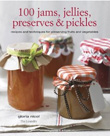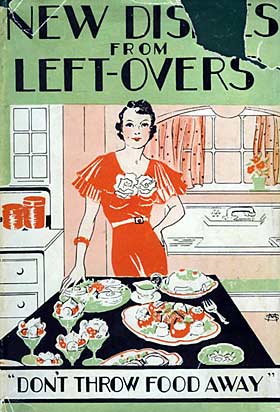We’ve had a few days of really hot weather and I never think to change the temperature of the fridge to compensate for the extra heat. Subsequently some milk started to go off. It was only a bit off, off enough so it tasted strange in tea. In an attempt to be resourceful and thrifty (not a quality that comes naturally to me) I set about turning it into something else. However I didn’t really think it through. I could have made some scones or added the milk to the mixture when making a chocolate cake but I messed up big time and ended up with a house that smelt disgusting and a dish of tasteless rubbery cheese that would have needed other things added to it to make it even vaguely palatable. I had wasted a good hour of my time and the ‘cheese’ went in the bin.
Perhaps it is just me, but the whole idea of making use of leftovers makes life feel grim and miserable. Just the word ‘leftovers’ is depressing. As the need to be more mindful of waste becomes increasingly necessary, someone needs to rework the subject to make it appealing. We need a new vocabulary that makes food scraps and stale stuff exciting.
While I was scrabbling around trying to find a use for my sour milk I found an old household encyclopaedia that I had collected primarily for its colourful dust jacket. Set out in an A to Z format, for sour milk it says:
SOUR MILK This is very good for polishing linoleum. It will remove iron rust from white fabrics.
So next time perhaps I’ll give that a go, not that I have any linoleum in the house. I spent quite some time reading through the book though, which is filled with useful nuggets of information as well as much that is quaint and outdated.
BED to ascertain if damp. Put a mirror for a few moments between the sheets. If it is misty when removed, then the bed is damp.
CHIMNEYS These can be kept reasonably clear of soot if potato peelings mixed with a little salt are burnt in the grate at least once a week. It will form a glaze inside the chimney and thus prevent its becoming clogged.
COFFEE GROUNDS Dry coffee grounds filled into a suitable covering make excellent pin-cushions; the pins and needles struck therein will never rust.
FLY-PAPERS to make. Take pieces of strong, thick paper, smear with treacle, and place in prominent positions. Always burn fly-papers after use.
(You just know your hair will become tangled up in one of these!)
HEDGEHOGS Keep in a cage during the day and release at night if it is desired to use them as beetle-catchers. Feed on bread and milk and an occasional earth-worm.
LAVENDER SACHET Mix together 75 parts powdered lavender, 20 parts powdered benzoin and 1 part oil of lavender.
(This actually sounds lovely and I think is worth trying out. Benzoin has a scent similar to vanilla so I imagine this combination would work beautifully.)
Gloria, I’d love to have an evening in reading the household encyclopedia with you, I’m still laughing at the household hints and its 1.55am. I’m trying to compose an article about the horrible consequences of a relatively new group of insecticides that are killing bees and just about everything else. So organic is the only way. Please don’t use silver spoon sugar [from british sugar beet]for jam making as it is seed treated with a particularly ghastly chemical/nerve agent that persists in the crop and soil, wiping out all species for years.
Food production and vegeteble growing is unfortunately linked to the criminal excesses of the agro chemical companies. You are lucky to find the blackcurrants in your neighbour’s plot, God knows what shop bought varieties contain. Only one answer…. Grow Your Own!







